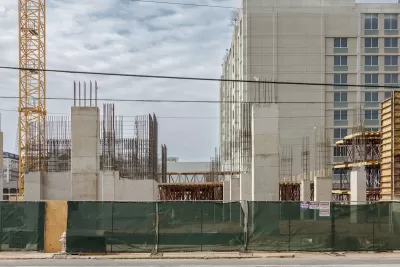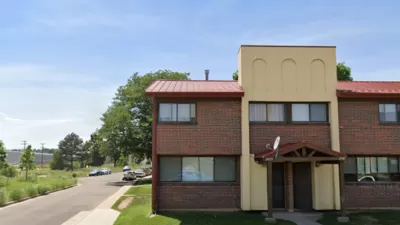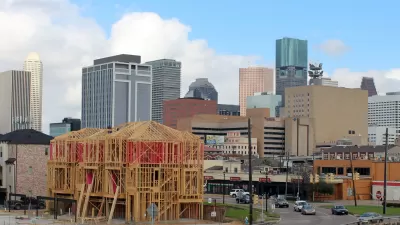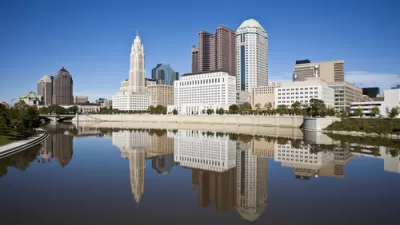Affordable housing is one piece of a larger, interconnected approach.

In an excerpt from Fragile Neighborhoods: Repairing American Society, One Zip Code at a Time published in Next City, Seth D. Kaplan calls for a more holistic approach to solving the related problems of poverty, housing insecurity, and a lack of economic opportunity.
Whether in an urban or suburban neighborhood, a suitable habitat should include a commercial center — an avenue, cluster of shops, or plaza — as well as parks, libraries, and houses of worship, which provide everyday facilities and services as well as places for people to gather and interact. And it should include transit points, connecting residents to people and opportunities outside the neighborhood, as well as contiguous sidewalks affording residents walkable access to other areas within the neighborhood.
Quoting sociologist Emily Talen, Kaplan notes that many “neighborhoods in the US are overwhelmingly not well serviced.” Residents with means move to other areas, leaving poor neighborhoods even more underresourced. For Kaplan, “Without healthy neighborhoods, school systems cannot improve educational results, health care agencies cannot improve health outcomes, and police cannot make streets safe. Yet the great majority of public and private interventions are not structured to address the underlying social dynamics that produced these problems in the first place.”
FULL STORY: Affordable Housing Is Never the Only Problem – Or the Only Solution

Trump Administration Could Effectively End Housing Voucher Program
Federal officials are eyeing major cuts to the Section 8 program that helps millions of low-income households pay rent.

Planetizen Federal Action Tracker
A weekly monitor of how Trump’s orders and actions are impacting planners and planning in America.

Ken Jennings Launches Transit Web Series
The Jeopardy champ wants you to ride public transit.

California Invests Additional $5M in Electric School Buses
The state wants to electrify all of its school bus fleets by 2035.

Austin Launches $2M Homelessness Prevention Fund
A new grant program from the city’s Homeless Strategy Office will fund rental assistance and supportive services.

Alabama School Forestry Initiative Brings Trees to Schoolyards
Trees can improve physical and mental health for students and commnity members.
Urban Design for Planners 1: Software Tools
This six-course series explores essential urban design concepts using open source software and equips planners with the tools they need to participate fully in the urban design process.
Planning for Universal Design
Learn the tools for implementing Universal Design in planning regulations.
Ada County Highway District
Clanton & Associates, Inc.
Jessamine County Fiscal Court
Institute for Housing and Urban Development Studies (IHS)
City of Grandview
Harvard GSD Executive Education
Toledo-Lucas County Plan Commissions
Salt Lake City
NYU Wagner Graduate School of Public Service





























